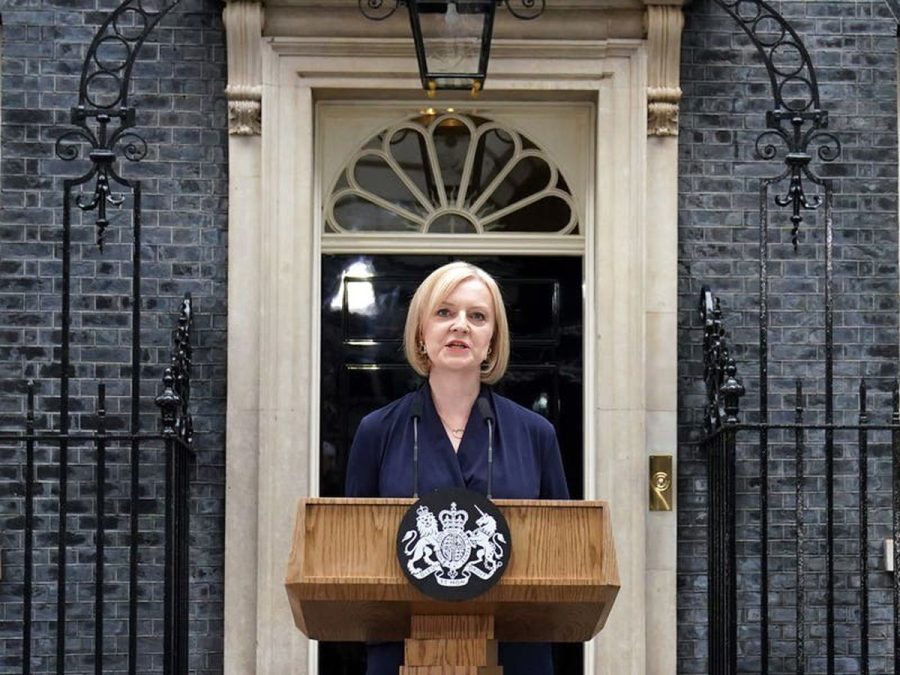On Wednesday, Nov. 1, Orsted, a Danish company specializing in offshore wind production, announced that it was canceling two planned development projects off the New Jersey coast. While New Jersey Gov. Phil Murphy criticized the firm for abandoning its business commitments, local New Jerseyans on the Jersey shore celebrated after their years-long campaign against offshore wind power succeeded.
Concentrated in former Democrat-turned-Republican Congressman Jeff Van Drew’s constituency, these concerned residents had mobilized under a banner of local opposition. Concerned about home value depreciation, impact on tourism and, most famously, an old-school, tear-jerking Save The Whales campaign that promoted unfounded concerns about wind turbines’ fatal impact on local whale populations, residents of Ocean City, N.J., waged war on the project from the start. Orsted did not officially pull out due to resident opposition and their campaign of legal delay, but the efforts of locals to oppose wind farms should not be viewed as an example of a successful, organic grassroots movement.
This example of popular mobilization against a relatively uninvasive, clean, unlimited energy source had the backing of major energy companies, hidden through donations to legal advocacy organizations, think tanks and major Republican foundations.
While this example was egregious in masquerading its policy goals with an emotional, manipulative call for whale conservancy at the expense of much-needed clean energy, it wouldn’t have surprised anyone who has been paying attention. The conservative right, with its allies in the fossil fuel industry, have used this playbook time and again to rally against clean energy development. The surprising and more critical fact, though, is that the progressive left does the same thing, too.
As a result, there is a vacuum of willing and politically-motivated clean energy actors, allowing the conservative right to chart the long-term pathway of domestic energy development.
Theoretically, the Democratic environmental coalition would have developed a parallel set of political and environmental institutions composed of renewable energy corporations, progressive think tanks, political actors and civilian activists. Their aim would be to promote clean energy solutions that can meet and even exceed this country’s growing energy needs, which are projected to grow up to 15% by 2050 from current levels, according to the U.S. Environmental Information Administration.
If clean energy solutions cannot meet current nor future needs, dirty energy will predominate and climate change will continue to wreak havoc on the planet — disproportionately on low-income, vulnerable people.
Unfortunately for the health of the Earth, the American left refuses to acknowledge this fact and the scale of the response necessary to combat it. To combat the right’s powerful, well-funded, inertia-driven climate denialism, the left needs dynamic coalitions dedicated to bringing cheap and abundant clean energy to market. This would crowd out aging coal producers and stimulate further technological innovation that would make clean energy more accessible.
This positive feedback loop can be achieved — the rapid development of solar panel technology and its cost efficiency is evidence of this. But it will not move forward unless the actors blocking its progression are removed. But it is not the political right who offer the greatest threat to the deployment of renewables. Their opposition is well-known and could be counteracted with an equal and opposite political force. Instead, it is clean energy’s ostensible allies, the so-called “progressive environmentalists,” who should be working toward its propagation and yet are not, that put this project at risk.
Take the Sierra Club, the preeminent preservationist society in America and one whose foundation has a stated goal of “promoting climate solutions.” One could reasonably expect that they are committed to solar energy production as a supplementary clean energy source for energy-poor communities with high exposure to sunshine. Yet in Puerto Rico, a poor territory attempting to sustainably rebuild its electrical grid to mitigate exorbitant energy costs and high petroleum dependence, the Sierra Club filed a lawsuit against plans to build solar fields.
Ignoring the needs of the people for abundant, inexpensive energy and the elected government’s determination that solar energy developments outweigh ecological costs, the Sierra Club sued to stop. Their reason: potential damage to ecological preserves and agricultural security.
The Puerto Rican government prioritized clean energy as a “climate solution” and economic stimulus to an island stuttering in economic recovery after a major hurricane. Yet the Sierra Club managed to deny its “climate solutions” tenant in favor of its “conservation” tenant. These values can be contradictory in the context of clean energy development. The Sierra Club, a foundational member of the progressive movement, weaponizes their differences to fit its inconsistent goals.
The modern progressive environmental coalition is based around these contradictory opinions and misplaced value systems. By denying governments the right to build clean energy where and when it suits their constituencies, environmental groups hasten the effects of climate change rather than delay them. Bogging clean energy projects down in costly and timely litigation only increases the energy needs of the present and future generations that will be met by fossil fuels instead of wind, solar and nuclear power.
Environmental groups on the progressive left have also waged a long, costly and ultimately self-destructive campaign against nuclear power, which can achieve clean energy at a large scale and low cost to consumers. As a bonus, its emissions are null — only water vapor.
The Office of Nuclear Energy of the U.S. government stated that existing nuclear energy supply contributed to the non-release of more than 471 million metric tons of carbon dioxide emissions in 2020. This sum was more than all other clean energy sources combined, and it used land less-intensely than competing clean energy sources, with wind farms requiring 360 times as much land and solar farms requiring 75 times as much land to produce an equivalent amount of clean energy.
A product this clean with minimal waste (60 years of used nuclear fuel could occupy a space as small as a football field only 10 yards deep) would seem to be the future of renewables in America and abroad, eliminating demand for heavy pollutants like coal and natural gas. Yet, once again, leftists contravene their mission because they don’t understand opportunity costs and pragmatic considerations.
In Germany, after a long-run battle with left-leaning environmental groups, the government announced the closure of their last-remaining nuclear plants. Germany as a nation has led the world in environmental engineering, paving the way for mass adoption of solar panels and innovative electrical grids. But here, they repudiated progress and their national environmentally progressive ethos. The consequences were predictable. Reuters reported that “recent nuclear shutdowns…means that coal is making a comeback as the most viable option for German power producers to generate stable and affordable electricity.”
Without abundant, zero-emission nuclear power, German environmental activists succeeded only in increasing the amount of carbon emissions in the atmosphere. Germany’s increasing need for energy could not be met by other renewable energy sources, so they turned to coal — the deadly pollutant whose effects spurred the clean energy revolution, to make up for the available renewable energy they physically destroyed.
The modern fight for clean energy is a paradox of dizzying proportions. The right should not be spared in condemnation for their bizarre, continuing attachment to fossil fuel expansion. But the left facilitates the same end goal through their ironic advocacy efforts denying new clean energy sources from sprouting up or outright abandonment of existing clean energy facilities.
Energy needs will be met by an energy source. Unfortunately, if the left continues to proceed down a path of faux environmentalism, prioritizing anything but the Earth and the energy needs of the people who inhabit it, they risk enhancing and advancing the dangers of climate change.
Real environmentalism, where existing fossil fuel sources are rapidly and cheaply replaced by renewable sources, puts the future first and the past last.

















Bou • Nov 17, 2023 at 12:47 pm
I agree with the overall message that the focus should be on transition to non-CO2 emitting energy sources (incorporating a mix of nuclear and renewable sources). That is definitely the way forward. What is important is understanding which solutions are more appropriate in which places. For example, a solar facility in Alaska would not make so much sense since the solar energy radiation that annually hits this region is dismal (Alaska seems more fit for a mix of geothermal and wind energy sources) in comparison to other regions such as the Sonoran or Caribbean regions. This brings me to my next point. You cite the efforts of the Sierra Club as contradictory and counter to their ‘promoting of climate solutions’ and proceed to mention an example of how they are against solar fields in Puerto Rico: “ignoring the needs of the people for abundant, inexpensive energy and the elected government’s determination that solar energy developments outweigh ecological costs”. Until now, you have provided convincing data that proves that this is an example of “faux environmentalism”: that the Sierra Club is too closed in their aspirations of the conservation tenet (as they provide a reason that it is potentially damaging to ecological preserves and agricultural security). What you miss in this whole debacle is the nuance of the energy crisis in Puerto Rico; and I don’t indict you for this because is really complicated (although the sources you use provide arguments for what I am about to defend). First things first, you miss to mention the alternative that many environmental groups in the Puerto Rican archipelago (including Sierra Club) advocate forward: solar energy, not in ecological sensitive places or agricultural fields, but on the roofs of industrial and commercial buildings, houses, abandoned landfills, and parkings. The option that is critical for truly resolving the centralized energy crisis of Puerto Rico is roof-top solar energy production at the point of consumption. This has been backed by Project Rooftop data and avant-garde microgrid installations in Puerto Rico (such as in Adjuntas). There is more than enough solar energy input in the roofs of houses to satisfy electrical residential needs in Puerto Rico; combining this with the places I said above (industrial and commercial buildings, abandoned landfills, and parkings) results in the majority of the energy (for all sectors) being produced by solar panels that are not occupying ecological sensitive areas or agricultural fields. Another thing that is important to understand is that the solar field projects are happening in agricultural land areas that are by law, agricultural lands (there only legal use is for food production). And is also important to note that this land is for development (not conservation) because agricultural production is economic development. It is critical for Puerto Rico to use this land for its intended agricultural use in order for them to develop a robust and greater agricultural industry for creating food resiliency in the face of climate change, while generating the much needed wealth. Additionally, you cite that “the Puerto Rican government prioritized clean energy” but this is straight out lie. First of all, Puerto Rico has no legitimate governmental system (it is a U.S. colony) but this is a huge tangent not apt for this discussion. Second of all, the “government” has promoted huge projects of natural gas (fossil fuels). The “government” has absolutely no real or based plans for transition to renewable energy. The opposite has been truth after the privatization of the public energy source into a private fossil fuel based monopoly (which is what a free market strongly wants to avoid because it makes consumers and potential producers ‘worse off’ ). Third of all, the “government” is notoriously known for not supporting farmers and negating certifications for land use. In essence, it is not simply “faux environmentalism” that has prevented solar energy implementation in Puerto Rico, but rather a strong committed “government” to the interests of U.S.A. natural gas corporations and the private interests of the fossil fuel based centralized energy monopoly; while abstaining Puerto Ricans to do agriculture in the legally protected land that is demarcated for agricultural use, selling the Puerto Rican land for external agents at the expense of the Puerto Ricans who want to inhabit these spaces, and more importantly, not acknowledging the fact that roof-top energy production is the way to go as means to provide the democratization of renewable energy access and decentralization of a corrupt and fossil fuel based system. In all, by using the case of Puerto Rico, you engaged in a process of cherry picking; in a way that was pertinent to your specific narrative. It is not responsible journalism when one’s message (which I agree in your main point) is brought about at the expense of misinforming or simplifying the Puerto Rican energy crisis.
(I could not attach sources to my claim because the website does not allow me; if needed, please reach out).